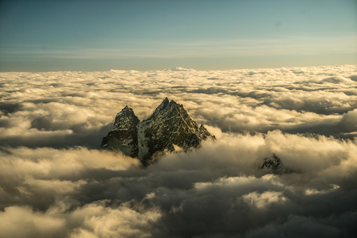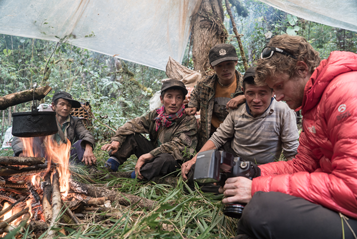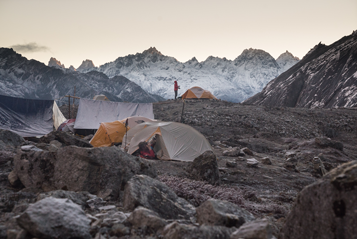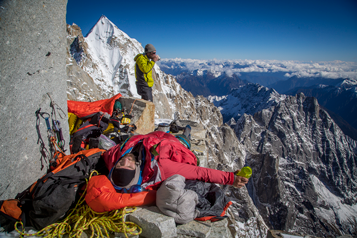It’s like something from a bad dream: you land the assignment of a lifetime from National Geographic; carefully weigh decisions about what to take to one of the remotest locations on earth; and then on location you break the monitor of your RED camera. One of the only items you don’t have a backup for.
“That’s the nexus of adventure filmmaking these days: how can you carry more, higher?” Renan Ozturk is talking to me from his base in Utah, where there are modest opportunities for adventure. From where he is there’s “pretty good access to the mountains” for “skiing and biking [and] options for some more remote adventures through the canyon lands.”
Which is all well and good, but a far cry from the extremes to which he went recently on assignment for National Geographic and The North Face. He embedded with a team attempting to climb Hkakabo Razi (pronounced KA-kuh-bo RAH-zee) in Burma to try and determine whether it’s the highest peak in Southeast Asia.
There were, to put it mildly, a few obstacles in the way: first, to even make it to basecamp to start the ascent would mean a two week trek through dense jungle. Then the climb itself, which had recently claimed the lives of a Burmese expedition and the crew of the helicopter sent to rescue them. Once their journey started there would be no medical facilities and no possibility of rescue. The team would be on their own.

Documenting the journey as a cinematographer, Renan realised as they made their way through the jungle that they would have to leave most of their gear behind if they were to even make it to the mountain. “We had sliders, we had tripods, a whole set of prime lenses. It was just really difficult to let a lot of that stuff go in the middle of the jungle in some random bamboo huts – we had to basically just stash some duffle bags and hope no one stole them.”
One thing he couldn’t bear to leave behind though, despite the weight, was the RED Epic-M Carbon Fiber camera he was using to document the trip. “The extra weight when you’re counting the carabiners on your climbing harness and you’re ripping tags out of your jackets just to save weight… the weight of the camera like that is a big commitment. [But it was] absolutely worth the suffering.”

One small problem: after succumbing to the intense humidity of the jungle, the camera monitor wasn’t working, so he had to shoot blind. “I had whole days where I thought I was getting it and there was some element of the shot I wasn’t thinking about – whether that’s the exposure or the focus or the framing that when you quickly look at your image you see – oh yeah that’s out.”
He tried to minimise focus issues by using wider lenses, and bracketed exposures; but as he went along it made him think about what he was shooting and why. “There’s moments of frustration trying to shoot blind but sometimes in the end less was more because it made you really pay attention to what moments are really important to shoot.”
The monitor wasn’t the only piece of equipment to falter in the punishing conditions. The team had been intending on backing up their footage to conventional hard drives, but they all failed at altitude. Fortunately Renan had also brought some 1TB Sandisk SSDs. Without a proper backup, “everything,” he says, “was hanging on the thread of these single SSDs.”

And if you do happen to find yourself out in -20° conditions with your cameras, a great tip to maximise your shooting time: leave them outside your tent when you sleep. “Even if it’s snowing outside put them in a small sack so they stay the same temperature as the outside. If you bring them from inside the tent to outside there’ll be all sorts of things going on with the electronics and condensation on the lenses and it’ll take you half the day just to get the camera working again… Sleep with your batteries to keep those warm and then pop those in last minute.”

That’s the Voice of Experience talking. And as our conversation draws to a close I ask if Renan’s approach to filmmaking has changed after returning from Burma. “What made that story beautiful was that nothing was perfect – there was dirt on the lens and maybe some shots were out of focus. But you don’t need everything to be perfect to tell a story.”
“It makes me realise that maybe you should just leave home with less gear. It’s that really strict photojournalistic approach, that old school National Geographic photographer ethos where you don’t get fancy with a bunch of lenses and everything. You should be able to tell a story with a single camera body and a 35mm lens no matter what your situation.”





